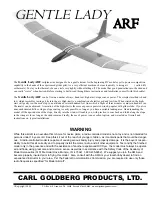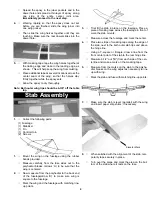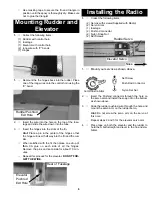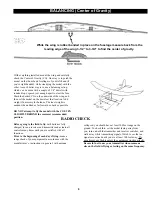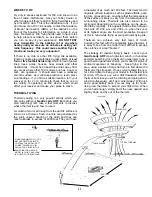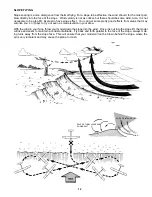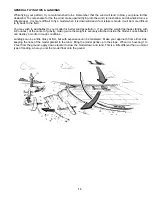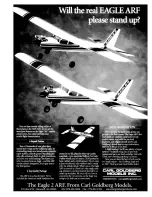
GENTLE LADY
CARL GOLDBERG PRODUCTS, LTD.
WARNING
While this aircraft is an excellent first choice for novice pilots, a radio-controlled model is not a toy and is not intended for
persons under 16 years old. Keep this kit out of the reach of younger children, as it contains parts that could be danger-
ous. A radio-controlled model is capable of causing serious bodily injury and property damage. It is the buyer’s respon-
sibility to build this kit correctly and to properly install the motor, radio, and all other equipment. Test and fly the finished
model only in the presence and with the assistance of another experienced R/C flyer. the model must always be operat-
ed and flown using great care and common sense, as well as in accordance with the Safety Code of the Academy of
Model Aeronautics (5151 Memorial Drive, Muncie, IN 47302), 1-800-435-9262). We suggest you join the AMA and
become properly insured prior to flying this model. Also, consult with the AMA or your local hobby dealer to find an
experienced instructor in your area. Per the Federal Communications Commission, you are required to use only those
radio frequencies specified “for Model Aircraft”.
P.O. Box 818 Oakwood, GA 30566 Phone # 678-450-0085 www.carlgoldbergproducts.com
The
Gentle Lady ARF
sailplane was designed to be a gentle trainer for the beginning R/C modeler, yet to possess competition
capability in the hands of the experienced glider pilot. As a very efficient machine, she reacts quickly to rising air ( called lift,
or thermals). To stay in the thermal, she can circle very tightly without falling off. The model has good penetration into the wind and
can really “cruise” when desired. Before starting to build, read through these instructions and familiarize yourself with this booklet.
The
Gentle Lady ARF
can be flown a number of ways: hand tow, high-start, slope soar, or power. The simplest method is hand
tow, which resembles towing a kite into the air. High-start is a combination of elastic cord and tow line. When stretched, the high-
start will gently tow the model up to an altitude of several hundred feet from which a flight of three minutes or more in dead air ( no
Thermals) can be obtained. A variation of the high-start is the more expensive powered winch, popular with glider clubs. If you live
near unobstructed hills or ridges, slope soaring is easily possible, so long as you have a suitable landing area. Hand launching the
model off the upwind side of the slope, directly into the wind, will enable you, with practice, to soar back and forth along the slope
in the rising air for as long as the wind remains. Finally, the use of power is an excellent option, and we include a firewall and
instructions on typical installations.
ARF
©Copyright 2003
Summary of Contents for Gentle Lady ARF
Page 14: ......

